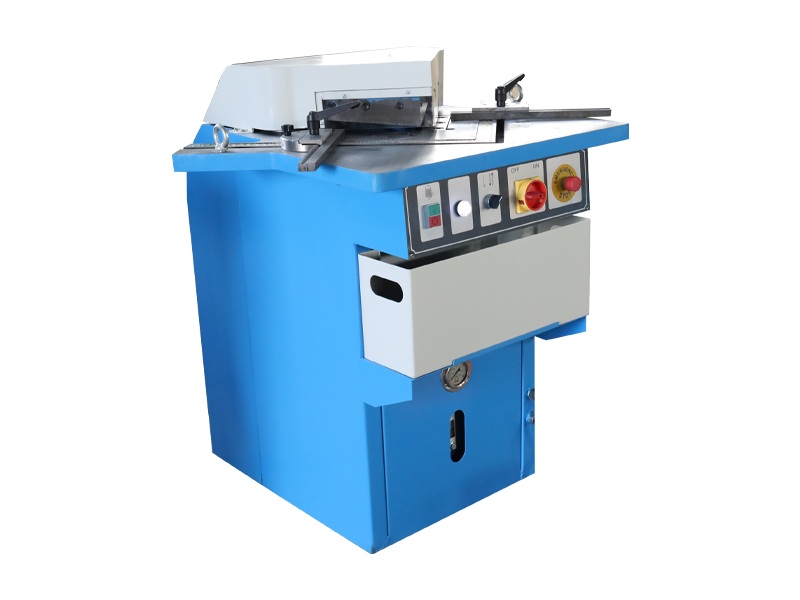In precision manufacturing—where metal components must adhere to strict dimensional standards (e.g., ISO 13715 for burr classification, DIN 4063 for edge rounding tolerances)—industrial deburring machines are indispensable for post-processing. These systems address two critical challenges: deburring (removing unwanted protrusions formed during machining) and edge rounding (creating controlled, uniform radii on part edges). Both processes are non-negotiable for ensuring component safety, performance, and compliance with aerospace, automotive, and medical device industry requirements. Below is a technically precise breakdown of their role, classification, benefits, and selection criteria.
1. Technical Definition & Industrial Significance
1.1 What Are Burrs & Edge Rounding?
Burrs are micro-protrusions (typically 0.01–0.5mm in height) formed when metal undergoes plastic deformation during machining (milling, stamping, laser cutting, or grinding). They compromise part functionality by:
- Causing friction-induced wear in moving assemblies (e.g., automotive gears, hydraulic valves).
- Creating misalignment in precision fits (e.g., aerospace fastener holes).
- Posing laceration risks to operators during handling.
Edge rounding—often paired with deburring—involves creating a defined radius (usually 0.1–2mm, per application) on part edges. This process enhances:
- Fatigue resistance: Eliminates stress concentrations that lead to cracking in high-cycle components (e.g., turbine blades).
- Assembly compatibility: Ensures smooth insertion of parts into housings or mating components.
- Coating adhesion: Prevents paint/coating peeling on sharp edges in consumer electronics or appliances.
Industrial deburring systems are categorized by their working principle, dust management, and automation level—each optimized for specific part geometries, materials, and production volumes:
| Machine Type | Core Technology | Key Specifications | Ideal Applications |
|------------------------------|---------------------------------------------------------------------------------|-----------------------------------------------------------------------------------|-----------------------------------------------------------------------------------|
| Wet-Type Deburring Systems | Uses aqueous coolants (or water-based solutions) to flush away burrs; integrated dust collectors capture 99.5% of particulate (≥0.5μm). | Coolant flow rate: 10–50 L/min; working pressure: 2–10 bar; edge rounding tolerance: ±0.05mm. | High-carbon steel (HRc 45–60) components (e.g., automotive crankshafts) where heat buildup risks material damage. |
| Dry-Type Deburring Systems | Relies on HEPA 13/14 filtration (99.95% efficiency for ≥0.3μm dust) and abrasive media (e.g., ceramic beads, nylon brushes) to remove burrs. | Media size: 0.5–5mm; air flow rate: 500–2,000 m³/h; surface finish: Ra 0.8–3.2 μm. | Aluminum (6061-T6) or magnesium components (e.g., medical device housings) where water exposure is prohibited. |
| Automated Deburring Machines | CNC-integrated systems with robotic arms (6-axis for complex geometries) or conveyor-based through-feed units; equipped with force-control sensors (±0.1N precision) to avoid over-processing. | Cycle time: 5–30 seconds/part; repeatability: ±0.02mm; compatible part size: 5–500mm. | High-volume production (200–500 parts/hour) of complex components (e.g., aerospace engine manifolds, smartphone chassis). |
| Abrasive Deburring Machines | Uses rotating abrasive belts (P80–P320 grit) or diamond discs to target burrs; adjustable contact pressure (0.5–5 kgf) for controlled edge rounding. | Belt speed: 5–15 m/min; disc RPM: 1,500–3,000; material compatibility: steel, titanium, brass. | Flat or simple-profile parts (e.g., sheet metal brackets, electrical enclosures) requiring consistent surface finishing. |
3. Core Benefits in Manufacturing
Industrial deburring machines deliver measurable value beyond manual processing (e.g., hand filing, sanding), addressing key manufacturing pain points:
3.1 Enhanced Component Quality & Compliance
- Dimensional precision: Automated systems maintain edge rounding tolerances of ±0.05mm, ensuring compliance with aerospace (AS9100) and medical (ISO 13485) standards.
- Surface integrity: Wet/dry systems reduce surface roughness from Ra 6.3 μm (post-machining) to Ra 0.8–1.6 μm, critical for sealing applications (e.g., O-ring grooves in hydraulic cylinders).
- Consistency: Automated machines eliminate human error, reducing non-conforming parts from 15–20% (manual) to 2–3%.
3.2 Improved Production Efficiency
- Throughput gains: Automated deburring systems process 5–10x more parts than manual labor (e.g., 300 smartphone chassis/hour vs. 30/hour with hand tools).
- Reduced setup time: CNC machines store 100+ part programs, cutting job changeover time from 60 minutes (manual) to 5–10 minutes—ideal for high-mix, low-volume (HMLV) production.
- Unattended operation: Robotic deburring cells integrate with MES (Manufacturing Execution Systems) for 24/7 lights-out production, boosting equipment utilization from 60% to 85%.
3.3 Safety & Cost Optimization
- Workplace safety: Eliminates manual handling of sharp parts and abrasive tools, reducing laceration risks by 90% (per OSHA 1910.212 machine guarding standards).
- Cost savings:
- Labor: One automated machine replaces 2–3 operators, cutting annual labor costs by $40,000–$60,000 (based on $25/hour, 2,000 working hours/year).
- Rework: Reduces scrap rates from 8–12% to 2–3%, saving $15,000–$30,000 annually for a manufacturer processing 500 tons of metal/year.
4. Key Selection Criteria for Deburring Machines
Choosing the right system requires aligning technical capabilities with production needs. Critical factors include:
4.1 Material & Part Geometry
- Material hardness: For high-strength alloys (e.g., titanium Ti-6Al-4V, HRc 30–35), select abrasive systems with diamond or cubic boron nitride (CBN) media. For soft metals (e.g., aluminum 5052), nylon-brush dry systems prevent material deformation.
- Part complexity: 6-axis robotic deburring machines handle 3D geometries (e.g., undercuts, internal cavities), while through-feed systems excel at flat/simple parts (e.g., washers, brackets).
4.2 Production Volume & Tolerance Requirements
- High-volume (10,000+ parts/week): Automated CNC systems with conveyor integration.
- Low-volume (100–1,000 parts/week): Semi-automated abrasive machines with manual load/unload.
- Tight tolerances (±0.02mm): Force-controlled robotic systems; loose tolerances (±0.1mm) may use manual wet systems.
4.3 Environmental & Facility Constraints
- Water access: Wet systems require plumbing and wastewater treatment (to meet local discharge standards, e.g., COD <100 mg/L). Dry systems are ideal for arid regions or cleanrooms.
- Space: Compact benchtop systems (0.5–1 m²) suit small shops; automated cells (5–10 m²) require dedicated floor space.
4.4 Total Cost of Ownership (TCO)
Consider upfront costs (automated systems: $50,000–$250,000; manual: $5,000–$20,000) plus ongoing expenses:
- Consumables: Abrasive media ($500–$2,000/month), coolant ($200–$500/month).
- Maintenance: Annual service for automated systems ($3,000–$8,000) vs. minimal upkeep for manual machines.


 English
English  中文
中文  Arabic
Arabic  Russian
Russian  Spanish
Spanish  Portuguese
Portuguese  French
French  German
German  Hindi
Hindi  Thai
Thai  Vietnamese
Vietnamese  Khmer
Khmer  Italian
Italian  Turkish
Turkish  Korean
Korean  Belarusian
Belarusian 

